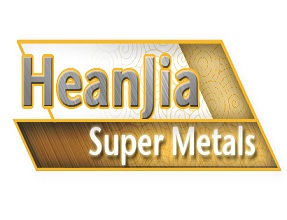You are here: home > Inconel News > Resistance to Corrosive Properties of inconel 600
Product (738)
- Pure Nickel Products (38)
- Incoloy Products (74)
- Inconel Products (72)
-
FeCrAl Product
(99)

-
Nichrome Products
(68)

- Monel Products (36)
- Hastelloy Products (49)
- Nickel Iron Alloy Product (59)
-
Nickel Copper alloys
(47)

- Nonferrous Metal Product (27)
-
Resistance Wire
(90)

- Stainless Steel Product (42)
- Mesh Demister (20)
- Others (17)
Product Forms (14)
Quality Certificate (11)
Learning Gallery (30)
Incoloy News (9)
Inconel News (22)
Molybdenum News (7)
Nikrothal News (4)
Nichrome News (13)
Titanium News (2)
Nickel News (8)
Alloys House (30)
Tools (27)
Nickel alloy News (30)
Latest Buzz (30)
nickel chrome copper iron alloys news (28)
Credit Report
Products Index
Company Info
Heanjia Super-metals Co., Ltd. [China (Mainland)]
Business Type:Manufacturer, Trading Company
City: Beijing
Province/State: Beijing
Country/Region: China (Mainland)
Inconel News
Resistance to Corrosive Properties of inconel 600
The chemical composition of inconel 600 wire enables it to cause resistance in the variety of corrosive media. The concentration of chromium in the alloy enables it to resist in the oxidizing conditions. Moreover the high concentration of nickel offers considerable resistance to the reducing conditions. The concentration of nickel offers resistance to the variety of alkaline solutions.
The inconel alloy offers excellent resistance to the oxidized acidic solutions. Moreover the oxidizing impact of the dissolved air is not adequate in the complete protection form the corrosion due to mineral acids and organic acids. The austenitic steel structure of alloy is attacked by the stress corrosion cracking.This kind of attack is basically corresponding with the natural chloride solutions like stress, water and dissolved oxygen and other factors.
The capacity of austenitic alloy to crack transgranularly in the chloride solutions reduces with increase in the concentration of nickel. The inconel 600 wire comprises of minimum 72% of nickel that is enough to resist the stress corrosion cracking in the chloride solutions. The alloy wire is set into high stress corrosion cracking at the elevated temperatures and high potential caustic alkaline solutions.
The alloy for such service is completely stress relieved by processing at 1650oF or one hour or at 1450oF for four hours before using and at this time the operation stress is minimized.The stress corrosion cracking can also occur in the presence of mercury at the high temperature. The suggestions provided for the caustic alkali service should be followed if it utilized in an operation that consists of mercury at the elevated temperatures. The inconel 600 wire is a consistent, austenitic solid solution alloy.
The precipitated alloy phases available in the microstructure are titanium nitride and titanium carbides and chromium carbides. The titanium nitride and carbide are visible in the polished micro samples at the magnification of 50 times or more.They seem to be smaller, randomly distributed, angular shaped and more forms. The shade changes from the orange yellow for nitride solutions and gray lavender for the carbides. The nitride and cyanonitrides are consistent at the temperatures lower than the melting point and are unaltered by the heat processing.
At the temperature limits between 1000oF and 1800oF or 540oC and 980oC, the chromium carbides precipitate from the solid solution. The precipitation occurs at the grain limits and in the atmosphere. The grain boundary precipitation, the corrosion behavior of inconel 600 wire is similar to that of austenitic alloy in that the material can be made susceptible to intergranular attack in the rigorous media by keeping at the high temperatures of 1000oF to 1400oF or 540oC to 760oC. At the temperature more than 1400oF, the dominator carbide is Cr7 and C3.
The inconel 600 alloy resistance wire is extensively used in the furnace and heating operations for boxes, muffles, wire belts and roller hearths. Similarly it is widely used in the application that require wide resistance to oxidation and furnace conditions. The alloy is the standard material for nitriding containers as it offers large resistance to nitrogen at the elevated temperatures. The inconel alloy offers severe resistance to oxidation at 1800oF. The loss of weight shows the ability of alloy to preserve the security oxide layer when it is subjected to cyclic exposures at the high temperatures.
Pre Page:
Resistance to carburization by Inconel...
Next Page:
Applications of inconel 600 Wire
.gif)


